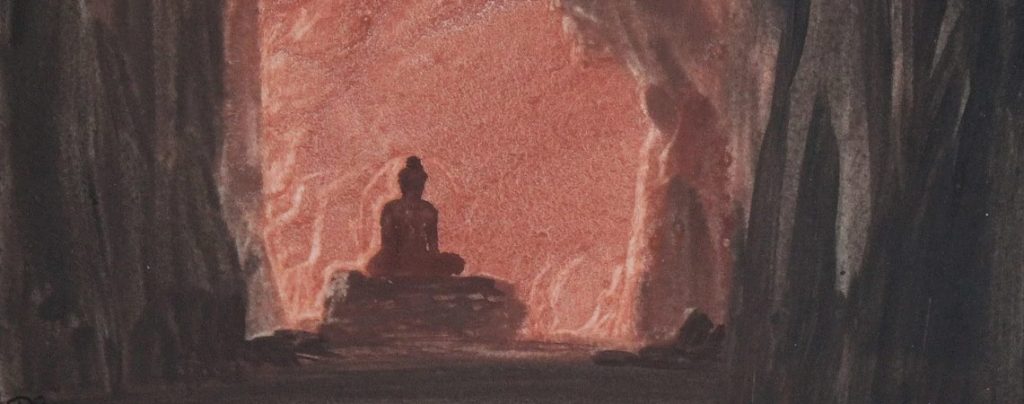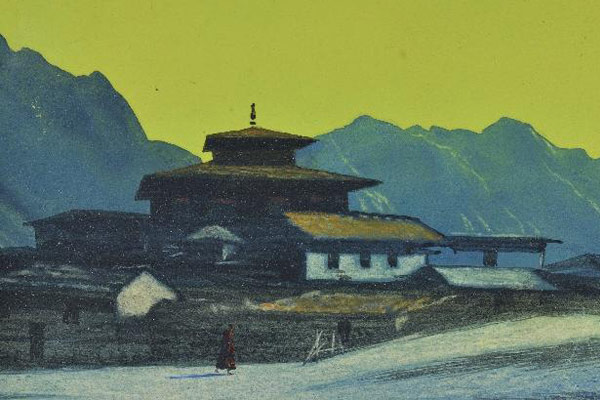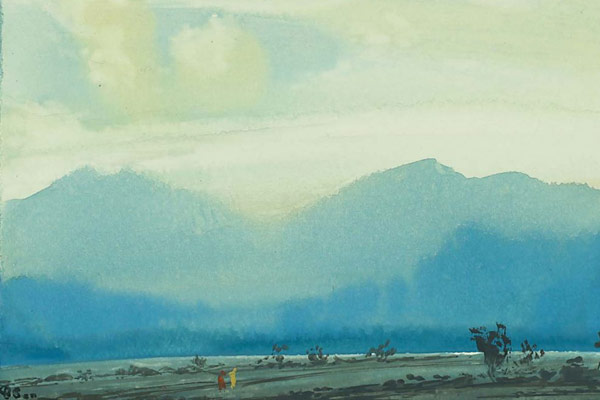

Prerana Das
Prerana Das is a History graduate from Hindu College, University of Delhi and has done her post graduation in Art History from the National Museum Institute, Delhi. Her area of interest and scope of work focuses on the tangible and intangible cultural history of Assam. Besides art and culture, she is also an appreciator and collector of music, literature and cinema. She testifies that dogs are better than humans.
Beauty is a significant aspect of a work of art but the philosophy of beauty has been much debated upon since the start of 20th century, the idea of it is changing eventually. Art form can be of a conceptualized nature or of an expressive nature. The terms are not mutually exclusive. Formalism and symbolism has been integral part of any creative work; be it art, literature, music, dance or various other performance arts. These are interrelating terms to understand various works of art and they almost always narrows down to these two words having a broad spectrum. One such artist whose work deals with these philosophy and style is Bireswar Sen.
Bireswar Sen was one of the most prominent landscape artists of modern Indian art of the 20th century because his works were a perfect blend of academic in style and original in concepts. They provoked the human eye and the mind to take a long leap into spirituality which mysteriously echoed magic and aesthetic pleasures.
Bireswar Sen was born in 1897 at Calcutta to Rai Bahadur Saileswar Sen, a professor of Literature at the Calcutta University, and his wife Niharnalini Sen. The artist had a definite influence from the Bengal School of Art in which he was trained under the tutelage of Abanindranath Tagore. He kept learning from others in Tagore’s circle such as Nandalal Bose and Gaganendranath Tagore. He came into contact with them in 1917 and stayed for 6 years at the Indian Society of Oriental Art. He also drew inspiration from several other eastern art traditions, especially Japanese technique, which he learned from Master Kampo Arai and others at Shantiniketan. There are often many similarities in tone that are drawn between Sen’s and Nicholas Roerich. It comes as no surprise to know that Sen was deeply influenced by Roerich’s vision and tone of painting landscapes, the mountains taking the focus.
The paintings of Bireswar Sen demonstrated his skills as a miniature painter par excellence. Exquisitely colourful hues, lonesome figures and monumentality of nature, his landscapes are poetics and woeful. Painted in watercolours and not bigger than postcards in sizes, these paintings defy the sense of distance and present the lofty Himalayan Mountains in all its magnificent glory as infinite. One needs to see through magnifying glasses for closer inspection of this eccentric and surreal display of these paintings which has forever immortalized the beauty of nature, especially the majestic mountains. I was lucky enough to witness an exhibition titled “Reflection: Man and Nature in the paintings of Bireswar Sen” at the National gallery of Modern Art in 2017. The accompanying music that played in the background was an excellent choice of an instrumental piece that completely transported the viewers inside the paintings.



His works can be categorized into three distinct themes for clarity of insight:
-
- In the majesty of nature seekers, we see the display of the grandeur of nature including various depictions of the valleys, the mountains and the ocean. We see figures that are alone and on the edge, appearing to be fragile but protected. It seems as if they have renounced the world and floats in divine ecstasy.
-
- In the abode of sacredness, we see religious figures appearing near places of worship. The painter has restricted these monks and sadhus to their respective monasteries and temples, keeping it both secular and conformist. They are painted in almost a fantasy-like way, the invocation of the gods with arms wide open, fire rituals and offerings.
-
- In the rhythm of life, we see an affectionate portrayal of the bliss of married life. The figures portrayed in these paintings are however not permanent settlers. They are nomadic people which are observed in their surroundings of pastoral lands and animal herding. They receive the fruits of nature as it comes. There is a sublime beauty that characterizes this idealism which hints at the romanticism of the artist. Of the most fascinating and beautiful feature of the paintings is the play on scale, where all the encompassing elements of nature engulf and dwarf the existence of man.
Bireswar Sen kept painting till the age he died. He passes away in 1974. His paintings were acquired by many Museums and Galleries across the world.






















